#multi vendor ecommerce software
Explore tagged Tumblr posts
Text
From Electronics and Clothing to Food and Pharmaceuticals, Ecommerce is Omnipresent.

In today’s world, it is nearly impossible to think about shopping without ecommerce. It has completely engulfed the entire retail industry. A futuristic retail business cannot afford to remain offline, especially after the pandemic when offline businesses were either forced to exit or face loss. Retail businesses turned to modern advanced technology and went online which not only kept them afloat but also brought sales and profit.
One can find almost all the desired products online on his ecommerce marketplace app. With just a few clicks or touches, a customer can enter into the world of online shopping where multiple vendors display their digital catalogue and place orders smoothly. All this has been made possible due to the power of multi vendor marketplace software that is delivering multiple benefits to the stakeholders involved in online shopping.
Multiple vendors on the same platform: Instead of having dedicated ecommerce software for each vendor to display their products, online marketplace software allows them to use one single platform to sell their items. Amazon and Flipkart are the best examples. A new vendor on the platform doesn’t have to invest heavily in marketing as he gets an already built customer base in the marketplace.
A variety of products: Due to the availability of multiple vendors on a single platform, the customers don’t have to jump from one platform to another in order to find the best products at the best price. They can find everything on the same platform thereby, reducing their efforts and saving their precious time.
Super fast delivery: Timely delivery has become a major factor in determining the success of any online business. Failing to deliver the product in the stipulated time, spoils the shopping experience of the customer. Keeping note of this, the multi vendor marketplace software has brought end-to-end automation in the entire ordering and delivery process. For instance, the delivery agent can find the optimized delivery route on their driver app in order to contribute to achieving quick commerce.
The ease of uploading items: With the help of the vendor’s dedicated merchant app, the sellers can upload items in bulk ranging from electronics and clothes to food and pharmaceuticals in just a click or touch. This makes the work of sellers easy. Also, the ease of product upload helps the customers in finding a variety of items on a marketplace.
In the eCommerce Market, the number of users is expected to amount to 2.5bn users by 2028. User penetration will be 29.7% in 2023 and is expected to hit 34.1% by 2028. Going through the data above, it is evident that ecommerce is omnipresent and is going to exist for a long time. Thus, prudent businesses will be ones that will walk along with the advancing technology.
#quick commerce#q commerce#ecommerce marketplace#multi vendor ecommerce#multi vendor marketplace software#multi vendor marketplace#multi vendor ecommerce software
0 notes
Text

VendorElite’s multichannel selling software transforms inventory management by centralizing and automating inventory tracking across multiple sales channels. This ensures real-time synchronization of stock levels, reducing the risk of overselling and stockouts. With VendorElite, businesses can efficiently manage orders, maintain accurate inventory records, and optimize stock levels to meet demand across various platforms, ultimately enhancing operational efficiency and customer satisfaction.
#Free Multi-Vendor Software for eCommerce#multichannelsellingsoftware#bestecommercesoftware#freeshippingsoftware#ohio#usa#canada#vendorelite#sellingproducts#ecommerceshop#newyork
1 note
·
View note
Text
Integrating E-Commerce Solutions across Websites and Apps for Multi-Platform Selling
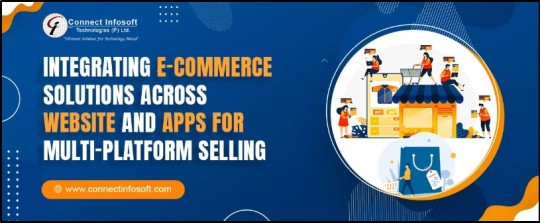
In digital age, e-commerce has become an integral part of the retail industry. With the rapid growth of online shopping, businesses are constantly seeking ways to expand their reach and maximize their sales potential. One effective strategy that has emerged is multi-platform selling, which involves integrating e-commerce solutions across websites and apps to create a seamless shopping experience for customers.
Without a doubt, selling across various platforms is a game changer in the realm of custom eCommerce development, with the potential to propel any organization to new heights. This blog will look at all aspects of multi-platform selling and how it affects the modern eCommerce business scene. Let us get started.
eCommerce Evolution: A New Era of Online Selling
Welcome to the new era of online selling! With the ever-growing popularity of e-commerce, businesses are constantly seeking ways to expand their reach and increase their sales. One such method that has gained significant traction is multi-platform selling, which involves integrating e-commerce solutions across websites and apps.
However, because consumer behaviours and market demands change so quickly, an all-in-one or single eCommerce strategy is insufficient for long-term success. This is where multi-platform selling provides numerous chances for firms looking to increase engagement and diversify their reach.
What Does Multi-Platform Selling Mean?
Multi-platform selling refers to the practice of selling products or services through multiple online channels simultaneously. This approach allows businesses to reach a wider audience and cater to customers' preferences across various platforms, including websites, mobile apps, social media platforms, and marketplaces. By offering a consistent shopping experience across different channels, businesses can enhance customer engagement, increase brand visibility, and boost sales.
Whether you run a little business or a large corporation, if you carefully position your company on these platforms, you will meet all of your customers' expectations by providing a convenient purchasing experience. However, managing sales across several channels is not as simple as it appears; a custom eCommerce development solution is required to optimize the process.
Major Perks of Multi-Platform Selling
There are several significant perks associated with multi-platform selling. Let's take a closer look at some of the major advantages that businesses can enjoy:
1. Expanded Reach: By leveraging multiple platforms, businesses can tap into a larger customer base and target diverse demographics. This broadens their reach and increases the chances of attracting new customers.
2. Enhanced Customer Experience: Multi-platform selling enables businesses to provide a seamless and consistent shopping experience across various channels. Customers can browse products, make purchases, and access support services conveniently, regardless of the platform they prefer.
3. Increased Sales Opportunities: With multiple channels at their disposal, businesses have more opportunities to showcase their products and services and convert leads into sales. Each platform serves as an additional sales channel, increasing the chances of generating revenue.
4. Improved Brand Visibility: Businesses may increase brand awareness and familiarity by maintaining a presence across many media. Consistent branding across channels promotes client trust and loyalty.
5. Better Data Insights: Multi-platform selling allows businesses to gather data from different sources, providing valuable insights into customer behaviour, preferences, and trends. This data can be used to optimize marketing strategies, personalize customer experiences, and drive informed business decisions.
Other key benefits of multi-platform selling include:
Improved conversion rate
Better customer loyalty.
Improved inventory transparency.
Improved customer segmentation.
Mobile commerce trend capitalization
Best Platforms for Multi-Channel eCommerce Business
1. Shopify: Shopify offers a comprehensive e-commerce platform that allows businesses to create and manage online stores. It provides seamless integration with various sales channels, including websites, mobile apps, social media platforms, and marketplaces.
2. Magento: Magento is a highly flexible and scalable e-commerce platform that caters to businesses of all sizes. It supports multi-channel selling by integrating with multiple platforms, enabling businesses to sell across websites, mobile apps, and marketplaces.
3. Etsy: If you want to sell antique, handcrafted, craft supplies, or other one-of-a-kind things online, Etsy is a great place to start. Users may easily access a wide range of product categories on this marketplace, including clothing, jewellery, tools, home, living, kids & babies, and entertainment.
4. Amazon Marketplace: As one of the largest online marketplaces, Amazon provides businesses with a vast customer base and global reach. Selling on Amazon Marketplace can significantly expand the visibility and sales potential of products.
5. eBay: eBay is another popular online marketplace that allows businesses to sell products to a wide range of customers. With its auction-style listings and fixed-price options, eBay offers flexibility for multi-channel selling.
6.Walmart Marketplace: Walmart is a frequently used marketplace that provides excellent prospects for online enterprises. This is a curated e-commerce portal. As a seller, you must meet specified requirements for providing excellent customer service.
7. Facebook Marketplace: This is Facebook's integrated platform that provides fantastic online selling choices to local sellers and small enterprises. This platform is simple to use and helps you promote your goods to a social media-savvy customer audience.
How to Set Up a Successful Multi-Platform Selling Strategy:
1. Identify Target Platforms:
Research and analyse the platforms that align with your target audience and business objectives. Consider factors such as platform popularity, user demographics, and integration capabilities.
2. Seamless Integration:
Select e-commerce platforms that offer robust integration capabilities with various channels. Ensure that your chosen platforms can synchronize product listings, inventory, pricing, and order management across all channels.
3. Consistent Branding:
Maintain consistent branding elements, such as logo, colors, and messaging, across all platforms. This creates a cohesive brand identity and fosters customer recognition and trust.
4. Optimize User Experience:
Provide a user-friendly and intuitive shopping experience on every platform. Optimize website and app performance, ensure mobile responsiveness, and streamline the checkout process to minimize friction and maximize conversions.
5. Data-Driven Decision Making:
Leverage analytics and data insights to monitor and measure the performance of each platform. Identify trends, customer preferences, and areas for improvement, and use this information to refine your multi-platform selling strategy.
6. Customer Support:
Offer consistent and responsive customer support across all platforms. Provide multiple channels for customer inquiries, such as live chat, email, and phone, to ensure a seamless support experience.
7. Cross-promotion:
Cross-promotion is a marketing strategy where two or more parties promote each other's products or services to their respective audiences. It's a mutually beneficial arrangement that can help increase brand exposure, reach new customers, and drive sales.
8. Privacy and Data Security:
- Manage all of your customers' data safely.
- Display all privacy policies to your customers to develop trust.
9. Focus on market trends.
- Keep up with the latest industry developments, platform updates, and client requests.
- Be prepared to change your business approach (if necessary) to stay ahead of the market.
Conclusion:
Multi-platform selling has become a crucial strategy for businesses aiming to thrive in the competitive e-commerce landscape. By integrating e-commerce solutions across websites and apps, businesses can expand their reach, enhance the customer experience, and boost sales. With the availability of various platforms, businesses can choose the ones that align with their target audience and business goals. By implementing a well-planned multi-platform selling strategy, businesses can establish a strong presence across multiple channels, drive customer engagement, increase brand visibility, and ultimately achieve success in the evolving world of e-commerce.
#Multi-Vendor E-Commerce Market Place Software#Best Multi-Channel Listing Software Solutions For Ecommerce Sellers#ECommerce Management Solution#ECommerce Product Management#Best ECommerce Software#Multi-Channel Selling Software#Shipping Software#Multi-Channel eCommerce Inventory Management Software#Product Listing Software#Multichannel Marketplace Software#Connect Infosoft#E-commerce website development#E-commerce website optimization#Mobile commerce optimization#Mobile commerce solutions#Multi-channel sales management
1 note
·
View note
Text
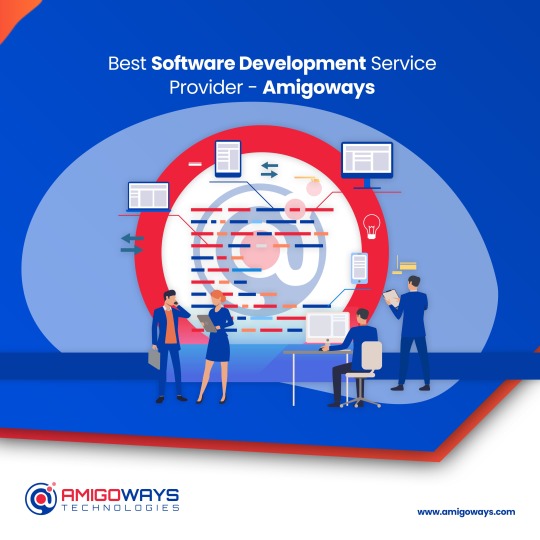
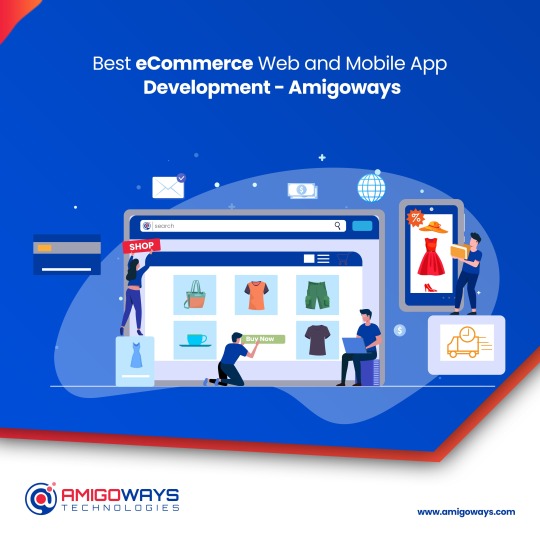
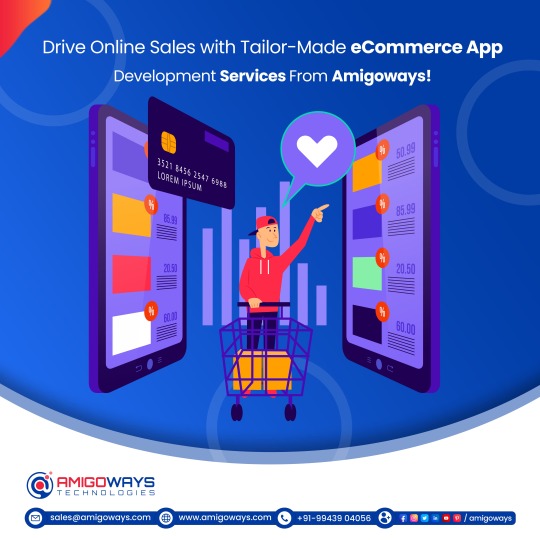
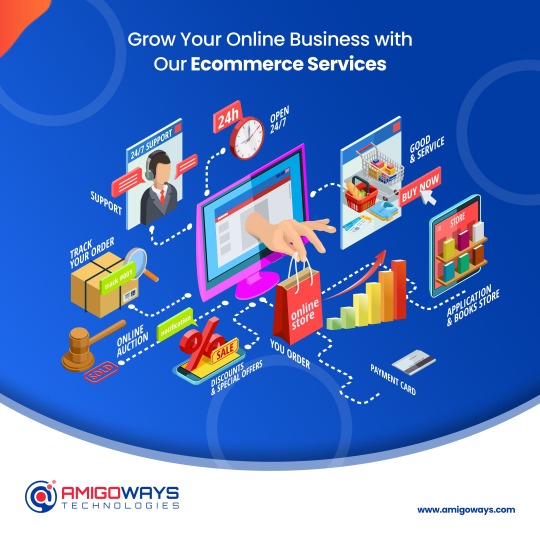
Top eCommerce Development In Tamil Nadu
Amigoways is one of the most trusted eCommerce development company in Madurai, We offer effective and successful eCommerce website & extension development for all types of B2B & B2C organizations. Amigoways is a team of well-trained, certified tech professionals who structure your venture with a business suite. Our multitude of services for your business upliftment on the business market.
Our eCommerce Development Services
Custom ECommerce Development
API Integration & Customization
Data Maintenance & Migration
ECommerce Audit & Optimisation
ECommerce Data Analytics
ECommerce Consulting
Business Intelligence
To know more about eCommerce development services Tap on - https://www.amigoways.com/ecommerce-development/
#ecommerce website development in madurai#Multi Vendor eCommerce Services in Tamil Nadu#top Multi Vendor eCommerce Services in Tamil Nadu#b2b ecommerce software solutions in madurai#multi vendor clone script madurai
0 notes
Text
Advantages of a Multi-Vendor Marketplace | Laravel E-commerce
In the realm of eCommerce, the concept of a multi-vendor marketplace stands as a beacon of opportunity, offering an all-in-one shopping experience where a diverse array of products and services converge under a single digital roof. These marketplaces, exemplified by industry giants like Amazon and Flipkart, open wide avenues for various sellers to showcase their offerings, effectively expanding their reach and boosting their revenue streams.
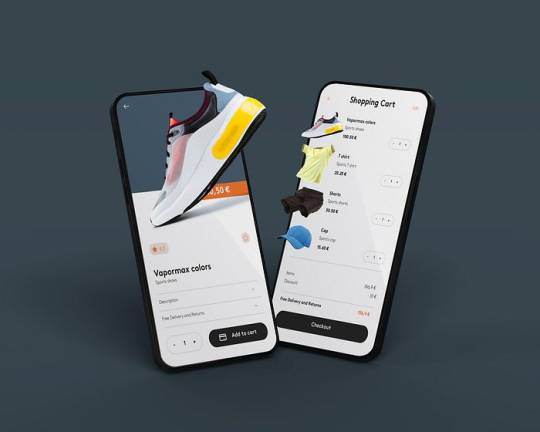
Understanding the Multi-Vendor Marketplace Business Model
At first glance, the concept of establishing a multi-vendor marketplace might appear complex. However, it’s far more manageable than it seems. The fundamental goal of vendors and merchants within such a platform is simple: to drive sales. Each participant plays a unique role in achieving this goal.
Vendors take charge of vital aspects such as sales management, order processing, product listings, inventory management, and shipping logistics. Meanwhile, service providers focus on devising innovative strategies to bolster brand recognition and drive revenue growth.
The operation of a multi-vendor marketplace involves several critical steps, whether you intend to launch a specialized fashion boutique, a designer jewelry hub, or an all-encompassing marketplace akin to Flipkart or Snapdeal. Vendors can easily register on the platform, manage their product catalogs, oversee purchases, and maintain control over their operations through a unified dashboard.
When customers place orders, transactions are seamlessly facilitated through the platform, with merchants collecting a nominal commission fee for each successful sale. Vendors also shoulder the responsibility of addressing customer inquiries and resolving any complaints, as well as handling packaging and shipping processes.
The Rising Demand for Multi-Vendor Marketplaces
In contrast to single-vendor stores that exclusively offer their own products, multi-vendor marketplaces present a treasure trove of choices from various brands and product categories, meeting the diverse needs of customers all in one place. This inherent versatility makes multi-vendor marketplaces an enticing prospect for entrepreneurs looking to capitalize on the retail landscape.
Embarking on Your Multi-Vendor Marketplace Journey
But how can you start your very own multi-vendor marketplace? The answer lies in your approach. You can embark on this venture either from scratch or with the assistance of marketplace software.
Developing a multi-vendor platform from scratch demands substantial investments in terms of both time and financial resources. It necessitates the expertise of a skilled design and development team. However, this custom approach offers unparalleled flexibility.
Alternatively, you can opt for ready-made marketplace software, which provides a cost-effective and time-efficient solution. These platforms streamline the development process, enabling you to launch your marketplace more swiftly and with reduced expenses.
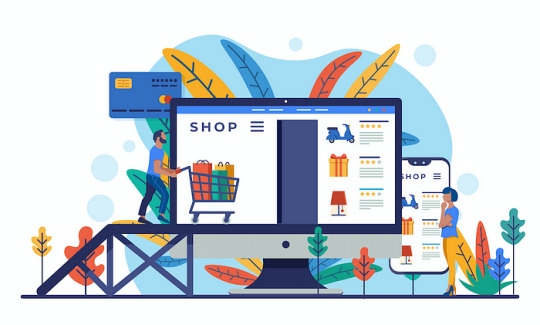
Benefits of Embracing the Multi-Vendor Marketplace Model
The multi-vendor marketplace model offers a multitude of benefits to sellers, marketplace owners, and consumers alike:
Sellers can rapidly expand their customer base on a global scale.
Vendors save on the costs and efforts associated with developing standalone applications, simply by signing up and listing their products.
Real-time inventory tracking and order management capabilities ensure timely order fulfillment and inventory control.
Marketplace owners can amass a broad clientele thanks to the extensive product range offered on their platform.
Owners can focus on enhancing vendor visibility, unburdened by the day-to-day operations of individual vendor shops.
The multi-vendor marketplace model provides diverse revenue streams, offering owners the potential for substantial earnings from a single platform.
Leveraging Laravel Ecommerce for Success
For those seeking a reliable software solution to build a promising multi-vendor marketplace, Laravel ecommerce emerges as an excellent choice. This comprehensive package boasts an array of features, including support for multiple payment gateways, advanced search functionality, robust store management tools, responsive customer support, multilingual options, and much more.
In conclusion, there has never been a better time for entrepreneurs to invest in the lucrative world of multi-vendor marketplaces. These platforms offer a gateway to multiple revenue channels and the potential for substantial profits in the dynamic eCommerce landscape.
#ecommerce#ecommerce clone scripts#laravel ecommerce store#laravel ecommerce system#laravel multivendor ecommerce#multi vendor laravel ecommerce#laravel ecommerce software#laravel ecommerce#laravel rental system#Ecommerce software#ecommerce marketplace software
0 notes
Text
Online Multi-Vendor Platform for B2B or B2C Marketplaces
FlightsLogic is the best B2B eCommerce multi-vendor marketplace platform with a wide list of all essential eCommerce features, expert technical support, ability to customize, highly scalable, and more. The platform offers a complete package to kick-start your B2B marketplace and streamline eCommerce operations.
Our fully customizable multi-vendor eCommerce solution allows for selling multiple products through a single storefront and customers can add products from different vendors to their single shopping cart. The site admin can set up shipping regulations, modify products in the marketplace, and add new sellers or vendors.
FlightsLogic is a self-hosted multi-vendor software for marketplaces suitable for both startups as well as enterprises. The on-premise platform is fully scalable, easy to customize, and follows agile methodologies to help you gain a competitive edge. & Amazon Business, Alibaba, Rakuten, IndiaMart, and Global Sources are the top five B2B eCommerce marketplaces globally.
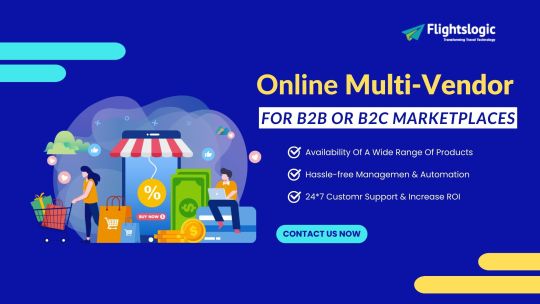
Our multi-vendor eCommerce marketplace development services cater to eCommerce businesses of all sizes to set up and manage marketplaces quickly, affordably, and efficiently, along with a focus on providing full control over your eCommerce store’s functionality.
FlightsLogic powered B2B Marketplace Website Software Solution comes in handy by providing you a platform to aggregate vendors, and buyers at the same place and manage the selling process effectively.
Multi-vendor marketplace software comes with powerful features including an easy-to-use interface, simple payment methods, social media integrations, rewards and discounts, ratings and reviews, and more. You can start small by taking a conservative approach and opting for an MVP. It is a minimalistic version of your B2B eCommerce marketplace. An MVP enables you to gauge the response of your target audience and pinpoint the flaws that could be detrimental at a later stage.
At FlightsLogic, we develop data-driven online marketplace solutions to help our clients establish a strong market presence. We offer the best set of features at competitive pricing. Our solutions deliver the perfect price-to-functionality ratio and this enables our clients to test their online B2B marketplace idea in the real world at an affordable price.
0 notes
Text
Top 10 ERP Software for Engineering Industry
In the contemporary and dynamic commercial environment, the engineering sector in India is confronted with a diverse range of obstacles, including intense competition, increasing client expectations, intricate project administration, and resource allocation optimisation. In the contemporary era of technology, the utilisation of Enterprise Resource Planning (ERP) software has become an essential and irreplaceable instrument for engineering firms aiming to optimise their operational processes, improve productivity, and foster long-term and sustainable expansion. Boost your engineering company's efficiency with cutting-edge ERP software – STERP software offered by STERP (Shanti Technology) – one of the most trusted firms offering ERP software for engineering companies in Mumbai. Take the first step towards success today with STERP!
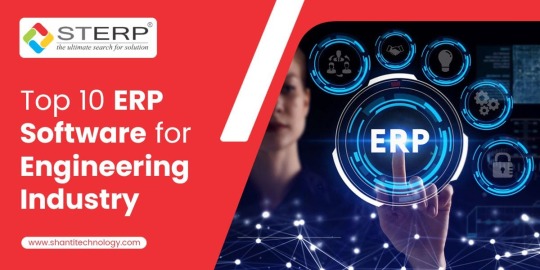
This blog article offers a comprehensive examination of the ten leading enterprise resource planning (ERP) software packages specifically designed to cater to the distinct requirements of the engineering sector in India. The aim is to assist organisations in making well-informed choices that will contribute to their future success.
· STERP Software:
STERP Software is a cutting-edge ERP solution offering an array of features to streamline business operations. It excels in location tracking, task management, and mobile user visit reports. Additionally, it enables seamless tracking of finished goods progress and efficient document management. ISO audit reports and vendor ratings ensure compliance and supplier assessment. The dynamic dashboard provides real-time insights, while multi-currency support facilitates global transactions.
The export documents feature simplifies international trade, and auto-email & SMS integration enhances communication. Quotation lost analysis ratio aids in optimizing sales strategies. Depreciation calculation and auto JV streamline accounting. Moreover, it's Android & iOS mobile app enables easy on-the-go access, including component process tracking.
· Tally.ERP 9:
Tally.ERP 9 is a highly renowned and extensively utilised enterprise resource planning (ERP) software in India, serving a diverse range of businesses, including engineering enterprises, irrespective of their scale or magnitude. Tally.ERP 9 offers comprehensive financial management, inventory control, and taxation modules that enable engineering organisations to adhere to Indian accounting rules and effectively handle financial data management.
· Oracle NetSuite:
Oracle NetSuite is a cloud-based enterprise resource planning (ERP) software that offers a cohesive platform, encompassing ERP, customer relationship management (CRM), and electronic commerce (eCommerce) capabilities. The software's adaptability and capacity to accommodate the needs of engineering businesses of varying sizes in India allow for the optimisation of operations and the acquisition of significant knowledge regarding their business procedures.
· Microsoft Dynamics 365 ERP:
Microsoft Dynamics 365 is a multifaceted enterprise resource planning (ERP) solution that encompasses several functionalities like financial management, supply chain operations, and project accounting. By incorporating localization capabilities specifically designed for India, the software enables engineering organisations to effectively streamline their processes, adhere to regulatory standards, and improve overall client satisfaction.
· Ramco ERP:
The Ramco ERP system has been specifically developed to cater to the distinct needs and demands of the engineering sector within the Indian market. The inclusion of modules pertaining to project management, asset management, and production planning facilitates the attainment of operational excellence and the stimulation of growth within engineering enterprises.
Empower your engineering firm with advanced ERP tools offered by STERP – one of the renowned ERP solution providers in Mumbai. Get a free consultation to discover how!
· EPPS ERP:
The EPPS ERP is a software solution originating from India that has been specifically designed to cater to the needs of the engineering industry. The EPPS ERP system offers a comprehensive range of modules that encompass several aspects of project management, including project planning, procurement, and quality control. By leveraging these modules, firms can effectively streamline their project management processes while upholding stringent quality standards.
· Marg ERP 9+:
Marg ERP 9+ is widely favoured among small and medium-sized engineering enterprises in India. The programme provides a wide range of capabilities, encompassing inventory management, order processing, and adherence to GST legislation, so facilitating operational efficiency and ensuring compliance with local legal requirements for enterprises.
· Infor CloudSuite Industrial (SyteLine):
Infor CloudSuite Industrial, previously recognised as SyteLine, is a comprehensive enterprise resource planning (ERP) solution that specifically caters to the needs of process manufacturing and job shop industries. Its suitability for engineering firms in India lies in its ability to effectively manage different production requirements.
· Focus i:
Focus i is an ERP software that has been designed in India specifically to address the distinct requirements of the engineering industry in the country. Focus i is a software solution that offers several functionalities, including project management, production planning, and HR management. This comprehensive suite of tools enables engineering organisations to enhance their operational efficiency and financial performance.
Optimize your engineering projects and increase profitability. Get ERP solutions offered by top ERP for manufacturing company in Mumbai – STERP (Shanti Technology).
· Reach ERP:
Reach ERP is a nascent participant in the Indian enterprise resource planning (ERP) industry, specifically tailored to cater to the needs of small and medium-sized engineering enterprises. The cloud-based design of this system, in conjunction with its various capabilities such as inventory control, order management, and financial accounting, facilitates efficient operational administration for organisations.
Final Thoughts:
The pursuit of efficiency, innovation, and sustainable growth holds significant importance in India's engineering business. The adoption of digital transformation within the industry has led to the recognition of ERP software as a crucial facilitator. This software plays a significant role in assisting engineering companies in optimising their operations, enhancing the efficient allocation of resources, and ultimately improving customer satisfaction. The aforementioned list comprises the top 10 enterprise resource planning (ERP) software systems that are tailored to address the unique requirements of the engineering sector in India. These software solutions offer a wide range of comprehensive features and functionalities, specifically designed to effectively address the many difficulties and opportunities prevalent in the market.
When making a decision on the choice of an Enterprise Resource Planning (ERP) system, engineering businesses should take into account many variables like scalability, localization capabilities, simplicity of integration, and vendor support. Gain a competitive edge in Mumbai's engineering sector - Implement effective ERP solution offered by STERP (Shanti Technology) – one of the distinct ERP software providers in Mumbai! The use of Enterprise Resource Planning (ERP) technology represents a strategic decision that holds the potential to bring about dramatic changes within the engineering industry in India.
#ERP software for engineering companies in Mumbai#ERP solution providers in Mumbai#ERP for manufacturing company in Mumbai#ERP software providers in Mumbai#ERP software#technology#ERP system#cloud ERP#ERP solutions#manufacturer#engineering#business process#management software#business analytics#engineering industry
5 notes
·
View notes
Text
Unlocking Innovation Through App Development in Bangalore with Hello Errors

In an age where digital experiences drive customer engagement and business success, mobile applications have become a necessity for growth. From daily essentials to luxury shopping, everything is now powered by apps—and the city that’s becoming the engine of this innovation is none other than Bangalore. For businesses eyeing the future, app development in Bangalore isn’t just a smart choice—it’s a strategic necessity.
Among the rising stars in this landscape is Hello Errors, a results-driven company that combines creativity, technology, and strategy to deliver top-tier mobile app solutions.
Why App Development in Bangalore Is Thriving
Bangalore isn’t just a city—it’s a digital movement. As India’s technology capital, it offers everything that businesses and entrepreneurs need to scale and innovate:
A dense network of developers, designers, and tech thinkers
Access to top-tier universities and R&D centers
A fast-paced startup ecosystem supported by VCs and accelerators
Availability of affordable, high-quality software development services
With this environment, app development in Bangalore has become synonymous with innovation, reliability, and competitive edge. Businesses from across the globe are now outsourcing their development needs to this vibrant city—and Hello Errors is one of the names that stands out in this ecosystem.
Hello Errors: Building Smart, Scalable Apps for the Future
At its core, Hello Errors is a company focused on transforming ideas into impactful digital solutions. Whether you’re building a customer-facing app, an enterprise tool, or a next-gen AI-based platform, Hello Errors brings a unique mix of technical depth and creative thinking.
Here’s what makes Hello Errors a preferred choice for app development in Bangalore:
1. Product-Led Mindset
Rather than simply executing code, Hello Errors adopts a product-oriented approach. They help clients conceptualize, validate, design, and iterate their app ideas until the solution fits perfectly into their business model.
2. MVP to Market Acceleration
Startups especially benefit from Hello Errors’ ability to take Minimum Viable Products (MVPs) and turn them into market-ready solutions���fast. Their sprint-based development process ensures efficiency, speed, and adaptability.
3. Cloud-Native and Scalable Architecture
Modern apps must scale as your users grow. Hello Errors ensures all applications are built on cloud-native architectures, supporting high performance and low latency, even under pressure.
4. Inclusive Design Thinking
Apps today serve diverse user groups. Hello Errors practices inclusive UI/UX design, ensuring accessibility, responsiveness, and universal ease of use across devices and platforms.
The Types of Apps Hello Errors Builds
Unlike firms that only handle basic business apps, Hello Errors takes on complex challenges and solves them with technology. Here’s a glimpse at the types of apps they develop under their app development in Bangalore service:
Marketplace Apps: Multi-vendor platforms for eCommerce, food delivery, home services, and more.
Booking and Scheduling Apps: Ideal for salons, clinics, and fitness centers.
Enterprise Productivity Tools: Project trackers, employee collaboration apps, inventory management, and CRM tools.
AI-Enabled Apps: Chatbots, recommendation engines, and machine-learning-based analytics platforms.
Educational & eLearning Platforms: With features like video streaming, live sessions, assessments, and gamified learning.
Each app is custom-built to match the client's branding, goals, and scalability needs.
Hello Errors’ Tech Stack at a Glance
An efficient app requires the right tech stack—and Hello Errors delivers just that. Their developers work with the most in-demand and versatile technologies to ensure optimal performance:
Frontend: Flutter, Swift, Kotlin, React Native
Backend: Node.js, Laravel, Python
Cloud: AWS, Google Cloud, Azure
Databases: Firebase, PostgreSQL, MongoDB
DevOps: Docker, GitHub Actions, CI/CD Pipelines
Their technology choices allow them to serve clients from early-stage startups to enterprise-grade organizations looking for app development in Bangalore.
Going Beyond Development: Hello Errors’ Added Value
While app development is the focus, Hello Errors understands that a great app is only one piece of the puzzle. That’s why their services expand into adjacent but crucial areas:
UI/UX Design: Human-centered interfaces with custom animations and intuitive flows.
SEO Optimization: Making sure your app, website, and business rank well on search engines.
Web Development: High-performing websites that work in harmony with your mobile app.
AI & Machine Learning: Empowering apps with smart features that personalize and predict user behavior.
This cross-functional capability ensures that clients aren’t just building apps—they’re building brands.
The Hello Errors Workflow: Transparent, Agile, Reliable
Clients praise Hello Errors for its structured yet flexible development model. Here’s how the process usually works:
Initial Strategy Meeting – Understanding your goals, business logic, and target users
Design Sprint – Wireframes, prototypes, and visual design using tools like Figma
Development – Agile sprint cycles, weekly progress updates, and demo days
Testing & QA – Multiple devices, environments, and edge-case scenarios
Launch & Support – Deployment, feedback loop, and long-term maintenance
This end-to-end system makes Hello Errors a standout choice for app development in Bangalore.
Who Should Work with Hello Errors?
Startups looking to launch quickly and validate ideas
SMEs aiming to digitize operations and connect with customers
Enterprises seeking scalable internal tools or client apps
Agencies & Consultants who need a trusted white-label development partner
No matter your business size, if you’re looking for high-quality app development in Bangalore, Hello Errors has the expertise and vision to deliver.
Final Thoughts: Let Hello Errors Build Your Digital Future
Mobile apps are no longer optional—they’re essential. And as more businesses race toward digitization, choosing a reliable development partner becomes the defining factor for success.
Hello Errors is not just a service provider; it’s a strategic partner that transforms ideas into dynamic, high-impact applications. Their proven record, innovative mindset, and comprehensive approach make them one of the top choices for app development in Bangalore.
Whether you’re building an app for the first time or optimizing an existing one, Hello Errors is ready to elevate your digital presence.
#AppDevelopmentInBangalore#HelloErrors#MobileAppDevelopment#BangaloreTech#StartupApps#UIUXDesign#AppDesignIndia#MobileInnovation#DigitalTransformation#AppLaunch
0 notes
Text
Can your retail business afford to remain offline?

Since the leapfrogging progress of technology in the last century, one cannot imagine the growth of a business without the support of cutting edge tools.
Technology has not only produced out of the box tools like smartphones and high speed internet for the convenience of consumers but also turned out to be a growth booster for businesses.
Retail industry is among the industries that cannot imagine its growth in the modern era without the support of technology. Ecommerce, introduced to the world at the turn of the last century, is the online buying and selling of goods that took the retail industry to another level.
Ecommerce delivered unparalleled convenience to both the consumers as well as other stakeholders involved in it. Consumers could place orders while sitting at their homes and workplaces, and get them delivered at their desired location. Similarly, businesses could easily increase their customer base and thereby, profit while selling through multi vendor ecommerce software.
Due to further progress in technology, consumers are getting more addicted to the local delivery software that is able to help businesses achieve quick commerce. Today, quick commerce has become the most desired thing among the consumer and retail businesses because of making 10 minutes delivery a possibility. Businesses failing to go online will not be able to realize its far-reaching benefits.
As per Statista, revenue in the eCommerce market is projected to reach US$3.64tn in 2023 and is expected to show an annual growth rate (CAGR 2023-2027) of 11.17%, resulting in a projected market volume of US$5.56tn by 2027. The number of users in this market is expected to amount to 5.3bn users by 2027.
#quick commerce#ecommerce marketplace#q commerce#multi vendor ecommerce#multi vendor marketplace platform#multi vendor marketplace#multi vendor ecommerce software#local delivery solution#local delivery software#local delivery service
0 notes
Text
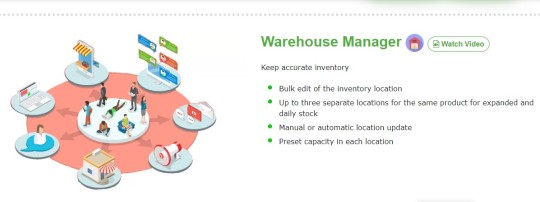
Warehouse Management System of VendorElite | Free Multi-Vendor Software for eCommerce Store | USA
Top Feature of Warehouse Manager:
• Keep accurate inventory.
• Bulk edit of the inventory location.
• Up to three separate locations for the same product for expanded and daily stock.
• Manual or automatic location update.
• Present capacity in each location.
#VendorElite#PriceManagerSystem#HowDoesPriceManagerSystemWorks#SecurityProtectionForEcommerceStores#BestMultiChannelListingSoftwareSolutions#ForEcommerceSellers#EcommerceManagementSolution#EcommerceProductManagement#BestECommerceSoftware#MultiChannelSellingSoftware#SelOnMultipleSitesFast#FreeShippingSoftware#SellingProducts#eCommerceShop#MultiChannelEcommercePurchaseManagerSoftware#ProductListingStore#FreeMultiVendorSoftwareforeCommerce#Ohio#USA#Canada#ecommerceshop#sellingproducts#BecomeSeller#software#reels#video
1 note
·
View note
Text

How to Build a Cutting-Edge Android & iOS Marketplace App: An AI-Powered Guide for 2025
Ready for market dominance? Build your custom, AI-integrated Android & iOS marketplace app with us. Start your journey now!
Boost your business with a cutting-edge Android & iOS marketplace app! Our AI-powered guide for 2025 details how custom marketplace solutions, cross-platform development, and AI integration create seamless, intelligent experiences for buyers and sellers, expanding your reach and competitiveness.
#shopify expert marketplace#marketplace app development#building a marketplace app#dev marketplace#marketplace website development#rapidapi hub#ecommerce marketplace development#marketplace developers#marketplace development platform#online marketplace software developers#marketplace software development#fiverr software development#online marketplace development#sharetribe developers#mirakl software#programmer marketplace#marketplace app development cost#marketplace for web developers#multi vendor ecommerce website development#custom marketplace development
0 notes
Text
What Is Point of Sale (POS) Software? A Complete Guide for Modern Businesses

In today’s fast-moving retail and service environments, businesses need more than just a cash register—they need a powerful system that can handle transactions, manage inventory, and provide real-time insights. That’s where Point of Sale (POS) software comes in.
Whether you're running a coffee shop, a clothing boutique, or a multi-location franchise, POS software helps streamline daily operations, improve customer experience, and boost profitability.
What Is POS Software?
Point of Sale software is a digital system used to complete sales transactions. It’s the technology behind the scenes at checkout—connecting inventory, payment processing, sales tracking, and customer data into a single platform.
Modern POS systems can be cloud-based or locally installed, and are used in both brick-and-mortar and mobile environments.
Key Features of POS Software
Here are some essential functions of a robust POS system:
💳 Sales Processing
Accept multiple forms of payment (credit/debit cards, digital wallets, cash, gift cards)
Quick barcode scanning or manual item entry
Tax calculation and tipping features
Split payments and refunds
📦 Inventory Management
Track stock levels in real time
Set low-stock alerts and automatic reorder points
Sync inventory across multiple locations or online stores
🧾 Reporting & Analytics
Sales summaries by day, employee, or product
Profit margin and cost tracking
Forecasting and trend analysis
👥 Customer Management
Collect customer data at checkout
Manage loyalty programs and discounts
View purchase history for personalized service
🧑💼 Employee Management
Track staff hours and sales performance
Set user permissions by role
Manage shifts and clock-ins/clock-outs
Types of Businesses That Use POS Software
POS software is used across many industries, including:
Retail stores (fashion, electronics, convenience stores)
Restaurants and cafés (with table management and tipping features)
Salons and spas (appointments, retail products, and services)
Mobile vendors (like food trucks or market stalls)
E-commerce businesses (with integrated online/offline inventory)
Cloud-Based vs. On-Premise POS Systems
Cloud-Based POS: Accessible from any device with internet, ideal for remote monitoring, updates automatically. (e.g., Square, Shopify POS)
On-Premise POS: Installed locally on your hardware, offering more control but requiring manual updates and maintenance. (e.g., older legacy systems)
Benefits of POS Software
✅ Faster transactions and shorter lines
✅ Improved inventory accuracy
✅ Detailed reporting for smarter business decisions
✅ Better customer service and engagement
✅ Streamlined employee and shift management
Choosing the Right POS Software
When selecting a POS system, consider:
Your business type and size
Budget and ongoing subscription fees
Hardware compatibility (e.g., tablets, printers, cash drawers)
Integration with accounting, CRM, or eCommerce platforms
Ease of use and quality of customer support
Final Thoughts
Whether you're a startup or an established brand, investing in the right POS software can dramatically improve your business operations. By combining speed, accuracy, and insights into one system, you’ll save time, reduce errors, and provide a seamless customer experience—both in-store and online.
0 notes
Text
Reconciliation Software: The Smart Solution for Modern Finance Teams
Introduction: Why Reconciliation Matters More Than Ever
In a world driven by real-time payments, multi-channel transactions, and increasing regulatory oversight, financial reconciliation has become one of the most vital and challenging tasks for finance teams. Whether you’re an enterprise dealing with thousands of transactions daily or a startup scaling rapidly, ensuring your books match your bank statements is not just good practice—it’s essential for accuracy, transparency, and decision-making.
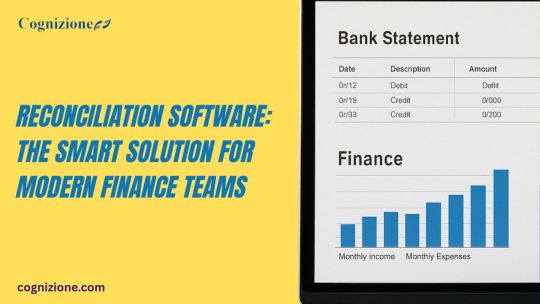
That’s where Reconciliation Software steps in as a game-changer.
With advanced automation, error detection, and deep analytics, reconciliation software—especially from innovators like Cognizione—helps businesses move beyond tedious spreadsheets and into the future of financial control.
What is Reconciliation Software?
Reconciliation software is a tool that automates the process of comparing internal records with external statements—such as bank transactions, payment gateway settlements, invoices, or accounting books—to ensure accuracy and integrity in financial reporting.
The software cross-verifies:
Bank statements with general ledger entries
Payment gateway settlements with orders and sales
Invoices issued with payments received
Vendor balances with supplier statements
Its objective is to flag mismatches, errors, and gaps in real-time—reducing human effort and minimizing financial risk.
Manual vs. Automated Reconciliation
Let’s face it: manual reconciliation is slow, error-prone, and resource-intensive. Finance teams download CSV files, compare rows line by line, identify discrepancies, and update ledgers manually. As transaction volume increases, the complexity compounds.
Automated reconciliation software, on the other hand, provides:
Speed: Reconciles thousands of transactions in minutes
Accuracy: Reduces errors from manual entry
Scalability: Grows with your business and transaction volume
Visibility: Offers centralized dashboards and reports
Audit-Readiness: Maintains logs, trails, and documentation
If your business still relies on manual methods, it’s time to rethink your reconciliation strategy.
Key Features of Cognizione’s Reconciliation Software
At Cognizione, our reconciliation platform is designed with real-world financial complexity in mind. Whether you're reconciling bank statements, vendor payments, POS transactions, or eCommerce settlements, our software delivers clarity and confidence.
1. Automated Data Import
The system connects to banks, ERPs, payment gateways, and accounting tools to automatically pull transactional data into one secure platform.
2. Intelligent Matching Engine
Using rule-based and AI-powered logic, Cognizione's engine matches transactions even when there are timing gaps, data formatting differences, or partial payments.
3. Real-Time Discrepancy Detection
Mismatches—like missing entries, overcharges, double payments, or unapproved transactions—are flagged instantly for investigation.
4. Customizable Reconciliation Rules
Different businesses have different rules. Our platform allows you to define matching logic based on your reconciliation needs—date tolerances, amount ranges, reference numbers, etc.
5. Multi-Currency and Multi-Entity Support
Operate across geographies? Cognizione handles multi-currency transactions and reconciles across business units, branches, or group companies effortlessly.
6. Audit Trails and Compliance
With full logs of who matched what and when, you're ready for audits with complete documentation and accountability.
7. Reporting and Dashboards
Generate detailed reconciliation summaries, exception reports, and settlement insights to support decision-making.
Types of Reconciliation Handled by Cognizione
Whether your business is a fintech company, a retail chain, an eCommerce platform, or a financial services provider, Cognizione’s reconciliation software supports various use cases:
Bank Reconciliation: Match your bank statements with ledger entries or ERP data
Payment Gateway Reconciliation: Reconcile sales and settlements from gateways like Razorpay, PayU, Stripe, etc.
Invoice Reconciliation: Compare issued invoices with payments received
Intercompany Reconciliation: For large enterprises with internal transactions between departments or subsidiaries
Card Reconciliation: Match POS or card transactions with bank deposits
Vendor Reconciliation: Validate supplier account statements with your payable records
Benefits of Using Reconciliation Software
Here’s why finance leaders across industries trust Cognizione:
✅ Enhanced Accuracy
Manual errors cost time and money. Cognizione ensures 99.99% accuracy through automation and smart validation logic.
✅ Improved Financial Health
Spotting discrepancies early prevents revenue leakage, unclaimed payments, and regulatory risks.
✅ Faster Month-End Closures
Reduce reconciliation cycles from days to hours, helping you close books faster and free up team resources.
✅ Better Compliance and Controls
With complete audit trails and exception reporting, ensure you're always prepared for financial scrutiny or statutory audits.
✅ Scalable for Growth
Our cloud-native platform scales with your transaction volume, making it ideal for startups and enterprises alike.
✅ Integration-Friendly
Cognizione integrates with major ERPs like Tally, SAP, Zoho, QuickBooks, and with banking APIs for real-time data exchange.
Who Needs Reconciliation Software?
Almost every business dealing with multiple transactions and third-party data sources can benefit from reconciliation automation. This includes:
eCommerce Brands
Retail Chains
Subscription-Based Businesses
Travel & Hospitality
Healthcare Institutions
Logistics & Shipping
SaaS Companies
NBFCs & Fintechs
If you’re spending more time matching numbers than analyzing financial outcomes, reconciliation software is the upgrade you need.
Future-Ready Finance Starts with Cognizione
Modern finance teams are no longer just bookkeepers—they are strategic partners in growth. By automating reconciliation, you empower your finance professionals to spend more time on analysis, forecasting, and strategy.
Cognizione provides the platform, tools, and support to make that transformation real.
Start Your Journey with Cognizione
Reconciliation doesn’t have to be painful. Automate, simplify, and scale with Cognizione.
Conclusion: Make Reconciliation an Asset, Not a Bottleneck
In a fast-paced business environment, financial clarity is not optional—it’s a competitive advantage. With Cognizione’s Reconciliation Software, you get more than just matching transactions. You gain trust in your numbers, confidence in reporting, and a future-proof finance function.
Don’t let reconciliation slow you down. Automate it, perfect it, and grow with it.
🔗 Learn more at https://cognizione.com/
0 notes
Text
Transform Your Supply Chain with Advanced Logistics ERP Software in 2025
Introduction
In an era where fast, efficient, and transparent delivery is crucial, logistics businesses must embrace digital tools to remain competitive. Logistics ERP software offers an integrated platform to manage your entire supply chain—from warehouse operations to fleet tracking—ensuring operational accuracy and cost control.
Whether you're managing freight forwarding, eCommerce fulfillment, or large-scale distribution, a specialized ERP solution for logistics can help optimize performance, improve visibility, and elevate customer satisfaction.
What is Logistics ERP Software?
Logistics ERP software is a purpose-built enterprise resource planning system designed for logistics and transportation companies. It automates and integrates key functions such as:
Warehouse and inventory management
Order processing and delivery tracking
Fleet and route management
Procurement and vendor coordination
Financials and invoicing
Customer service and CRM
With real-time data and end-to-end process visibility, logistics ERP systems eliminate manual errors, speed up operations, and empower data-driven decision-making.
Core Features of a Logistics ERP System
To fully optimize your logistics operations, your ERP should include:
Fleet Management – Monitor vehicle status, maintenance, route optimization, and fuel usage
Warehouse Management – Automate receiving, storage, picking, and dispatch
Inventory Control – Track stock levels, ensure accuracy, and forecast demand
Real-Time Order Tracking – Provide visibility to customers and internal teams
Multi-location Support – Coordinate multiple warehouses or branches seamlessly
Integrated Finance & Billing – Streamline invoicing, payment tracking, and tax compliance
Top Benefits of ERP Software for Logistics Companies
Enhanced Operational Efficiency – Reduce delays, automate tasks, and streamline workflows
Full Supply Chain Visibility – Track goods across every stage, from procurement to delivery
Improved Customer Experience – Enable real-time tracking and prompt delivery updates
Cost Optimization – Reduce wastage, fuel costs, and human errors
Scalable Growth – Easily expand your ERP as your logistics business grows
With the right ERP software, logistics companies can gain a competitive edge by improving service levels while keeping costs under control.
Industries Benefiting from Logistics ERP Software
Third-Party Logistics (3PL) Providers
eCommerce Warehousing & Fulfillment
Retail Distribution Chains
Freight and Cargo Services
Cold Chain Logistics and Food Transport
Why Choose Banibro IT Solution for Logistics ERP?
Banibro IT Solution specializes in implementing tailored Odoo ERP solutions for logistics and supply chain businesses. We understand the unique challenges of the logistics industry and deliver scalable, industry-specific solutions to meet them.
Our key offerings include:
Custom-built logistics ERP powered by Odoo
Fleet tracking and warehouse integration
Real-time dashboards and analytics
Cloud or on-premise deployment options
Dedicated implementation support and training
Whether you’re looking to enhance delivery accuracy, optimize fleet routes, or scale your warehousing operations, we’ve got you covered.
✅ Ready to Digitize Your Logistics Operations?
Let Banibro IT Solution help you implement a future-ready, efficient, and scalable logistics ERP software tailored to your needs. 📞 Contact us today for a free ERP consultation and start transforming your logistics business.
0 notes
Text
ODOO PURCHASE
Mastering Odoo Purchase: A Complete Guide to Efficient Procurement
Procurement is more than just buying — it's a strategic process that affects your company’s cash flow, operations, and customer satisfaction. The Odoo Purchase module is a robust tool that simplifies this process through automation, integration, and analytics. Whether you're a small business or a large enterprise, Odoo helps you manage everything from vendor selection to invoice matching — all from a single interface.
Deep Dive into Odoo Purchase Workflow
Let’s explore each stage in greater detail:
1. Automatic Purchase Requisition
When inventory reaches below the reorder level, Odoo can automatically trigger a purchase requisition.
You can set reordering rules based on:
Minimum quantity
Maximum quantity
Safety stock level
2. Request for Quotation (RFQ) with Multi-Vendor Capability
Generate and send RFQs to multiple suppliers at once.
Track the status of each quotation (sent, received, won, lost).
Use vendor pricelists to pre-fill prices based on vendor agreements.
3. Purchase Order (PO) Management
Accept a quotation and convert it to a PO.
Include delivery dates, incoterms, payment terms, and taxes.
Attach PDF copies or documents to each PO for traceability.
4. Goods Receipt & Quality Check
Odoo integrates with Inventory to manage goods reception.
Support for partial deliveries, backorders, and product inspection.
Custom workflows can be built for quality control before stock is accepted.
5. Vendor Bill & 3-Way Matching
The system checks if:
The invoice matches the PO
The products have been received
Quantities and prices align
Automates reconciliation and prevents payment errors.
Advanced Features of Odoo Purchase
1. Procurement Rules
Define rules like Buy, Make to Order, or Drop-shipping for each product.
Control how products are sourced based on customer demand or internal manufacturing needs.
2. Purchase Agreements
Blanket Orders: Long-term contracts for recurring purchases.
Call for Tenders: Send RFQs to multiple vendors and analyze bids before deciding.
3. Vendor Analysis Reports
Visualize vendor reliability, pricing, and delivery performance.
Use pivot tables or graphs to assess procurement trends over time.
4. Multi-Currency and Multi-Company Support
Seamless transactions with global vendors using real-time exchange rates.
Centralized purchasing for multi-company operations.
Real-World Use Cases
Retail & Distribution
Auto-replenishment based on POS or eCommerce orders.
Manage centralized procurement for multiple store locations.
Manufacturing
Link raw material procurement directly to production schedules.
Use MRP (Manufacturing Resource Planning) integration to predict demand.
Healthcare & Education
Keep track of approved vendors and contracts for regulated purchases.
Ensure compliance with financial regulations.
Service-Based Companies
Handle indirect procurement: laptops, software, subscriptions, office supplies.
Enable approval flows for departmental budgets.
Best Practices for Odoo Purchase Implementation
Define Approval Workflows
Use Odoo's rules engine to set approvals by amount, department, or product category.
Train Users with Role-Based Dashboards
Customize the interface for procurement officers, managers, and finance users.
Use Tags & Categories
Classify POs and vendors by type, region, or urgency for faster filtering and reporting.
Automate Notifications
Notify vendors of delays, send auto-reminders, or flag orders that require approval.
Leverage Studio or Developer Mode
Customize PO templates, add fields like “project code” or “budget line,” or automate vendor selections using Python logic.
Extensions and Custom Modules
Odoo Purchase can be extended with:
Approval Modules: Multi-level approval rules.
Advanced Procurement Scheduler: For batch planning and MRP integration.
Vendor Portal: Allow vendors to log in, view POs, submit invoices, and track payments.
Barcode Integration: Speed up goods reception with barcode scanners.
Example: How a Construction Firm Uses Odoo Purchase
Company: BuildPro Construction Pvt Ltd Problem: Delays in ordering materials, budget overruns, poor vendor coordination Odoo Solution:
Automated POs based on project schedules
Approval required for all orders above ₹1,00,000
Centralized vendor contracts with region-wise delivery planning
Vendor bill validation with 3-way matching
Result:
28% reduction in procurement delays
17% improvement in vendor payment cycle
Real-time visibility into project procurement spend
Reporting & Analytics
Purchase Report by Vendor
Top Products Ordered
Average Lead Time per Vendor
Delayed Deliveries
Monthly Purchase Spend (by category, department, project)
All reports can be exported to Excel or PDF and scheduled for automatic emailing.
Conclusion
Odoo Purchase is not just a procurement tool — it's a strategic procurement management system. By integrating with inventory, accounting, sales, and manufacturing, it becomes the core engine that drives smarter, faster, and more cost-effective purchasing.
Whether you're aiming to streamline basic purchases or implement enterprise-level sourcing policies, Odoo Purchase provides the flexibility, power, and integration needed to succeed.
VISIT: https://banibro.com/odoo-purchase/
Email: [email protected]
1 note
·
View note
Text
How to Choose the Right Ecommerce Reporting Software for Your Business Needs
In the fast-paced world of online retail, data is everything. Ecommerce reporting software provides the insights you need to make informed decisions, optimize marketing efforts, and drive growth. But with so many tools on the market, how do you choose the right ecommerce reporting software for your business?
This guide breaks down the key features, considerations, and steps to help you find the perfect fit for your ecommerce needs.
Why Ecommerce Reporting Software Matters
Whether you're a small store owner or running a large ecommerce operation, reporting software can:
Track sales and revenue trends
Monitor marketing campaign performance
Analyze customer behavior
Improve inventory and supply chain management
Provide actionable insights for business growth
With the right tool, you can transform raw data into clear, strategic decisions that enhance your online store's performance.
1. Define Your Business Goals
Before you start shopping for software, define what success looks like for your business. Are you focused on increasing conversions, boosting customer lifetime value, or reducing cart abandonment? Your goals will determine the features you need.
Key Questions to Ask:
What metrics matter most to your business?
Which platforms (Shopify, WooCommerce, Amazon, etc.) do you sell on?
Do you need multi-channel reporting?
2. Identify Must-Have Features
Look for ecommerce reporting tools that offer the right mix of features for your needs. Here are some of the top features to consider:
a. Customizable Dashboards
Get a clear view of your KPIs with dashboards tailored to your business priorities.
b. Integration with Ecommerce Platforms
Ensure seamless integration with platforms like Shopify, BigCommerce, WooCommerce, Magento, and marketplaces like Amazon or eBay.
c. Marketing and Sales Analytics
Track ROAS, customer acquisition costs, funnel performance, and more across channels like Google Ads, Facebook Ads, and email marketing.
d. Real-Time Data Reporting
Make decisions based on up-to-date information with real-time tracking.
e. Automated Reports
Save time by scheduling regular reports to be sent directly to your inbox or team members.
f. Customer Segmentation
Understand your customer base by segmenting data based on behavior, location, purchase history, and more.
3. Consider Ease of Use
The best ecommerce reporting software should be intuitive and easy to use—no coding required. A user-friendly interface allows you and your team to access and interpret data without needing a technical background.
Pro Tip:
Look for platforms that offer drag-and-drop builders and templates to get started quickly.
4. Evaluate Scalability
Choose software that can grow with your business. As your ecommerce store expands, you may need more integrations, higher data volumes, and advanced features. Ensure the tool is scalable and has pricing tiers that align with your future needs.
5. Compare Pricing Plans
Ecommerce reporting tools vary widely in price. Some offer freemium models with limited features, while others charge based on data volume or number of users.
Things to Consider:
Does the software charge per data source or report?
Are there hidden fees for integrations or support?
What is the ROI compared to your current manual reporting process?
6. Look for Strong Customer Support
No software is perfect, and at some point, you'll need support. Choose a vendor with responsive customer service, live chat, comprehensive documentation, and onboarding assistance.
7. Read Reviews and Testimonials
Before committing to a reporting solution, read user reviews on platforms like G2, Capterra, or Trustpilot. Look for recurring pros and cons to understand what to expect.
Conclusion
Choosing the right ecommerce reporting software is a strategic decision that can significantly impact your business performance. By understanding your goals, identifying key features, and evaluating usability, scalability, and cost, you can find a solution that turns your data into a competitive advantage.
Ready to simplify your ecommerce reporting? Explore tools like Whatsdash for an all-in-one dashboard that automates reports, integrates with major ecommerce and marketing platforms, and gives you full visibility into your performance.
#ecommercereportingtool#ecommercereportingsoftware#whatsdash#customdashboard#ecommercereporting#reporting tool#marketing reporting
0 notes